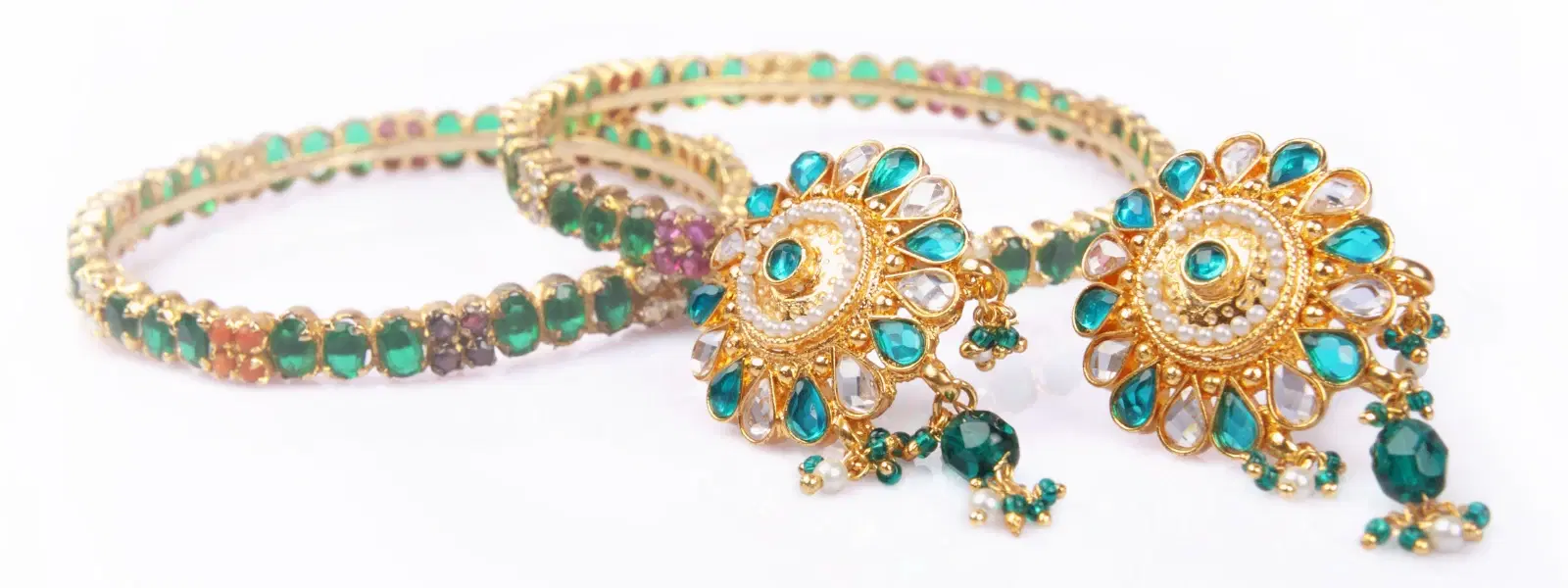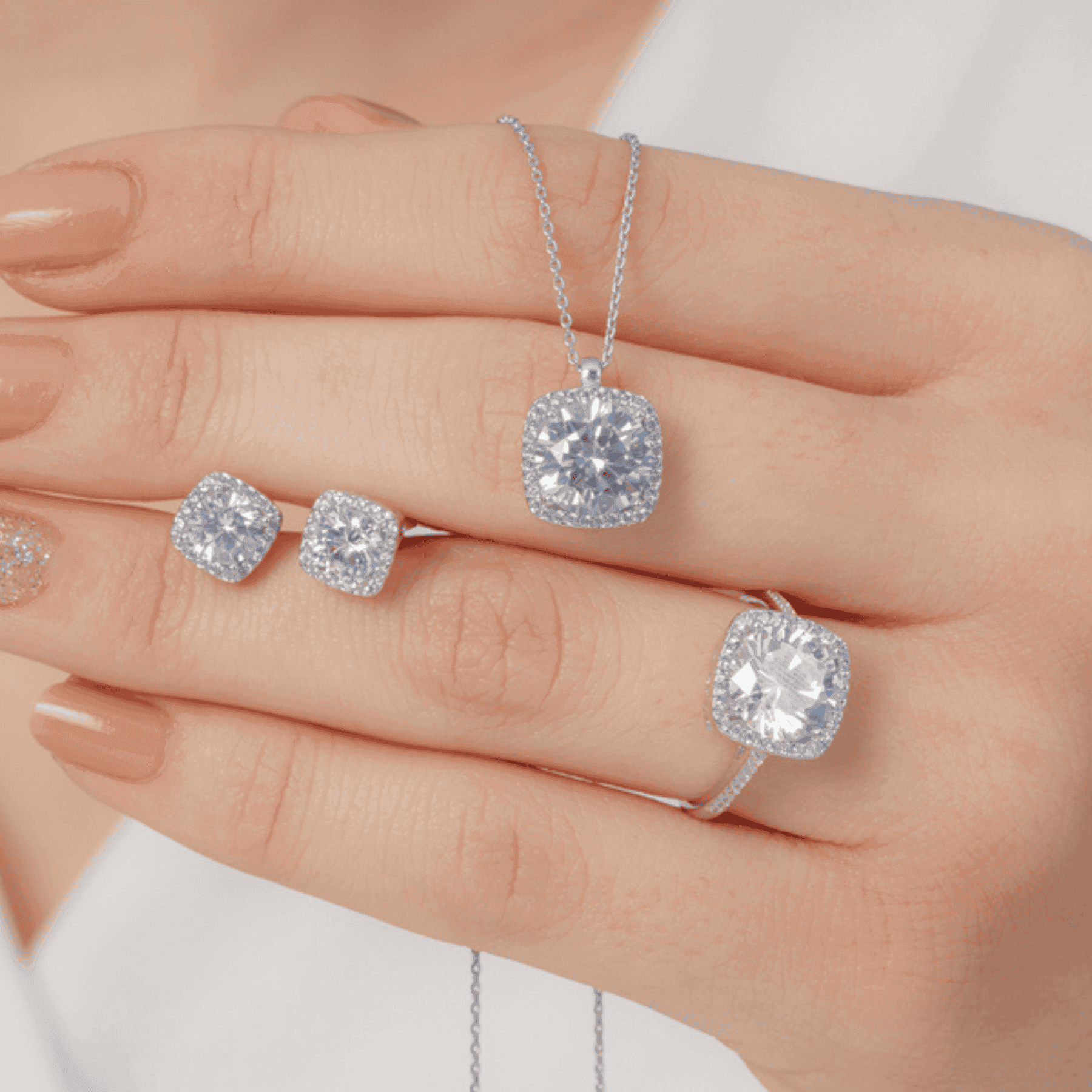
Watches & Jewellery
•04 min read

Diamonds have always been a symbol of love and self-expression. Recently, the conversation around lab-grown vs natural diamonds has grown even brighter. This guide is here to provide you with an ultimate checklist that covers all the essential points to help you decide the best diamond for your jewelry pieces. By reading further, you'll understand the differences between lab-grown diamond benefits and natural diamond characteristics, learn about ethical diamond options, and grasp the differences between lab and natural diamonds.
Before diving into the nuances, it is important to understand how lab-grown and natural diamonds are formed and what sets them apart. Lab-grown diamonds, also known as synthetic or man-made diamonds, are created in a controlled environment using advanced technology. They are produced in a matter of months, yet they share the same physical, chemical, and optical properties as natural diamonds. This process ensures that they maintain the high quality and brilliance expected of any diamond.
Natural diamonds, on the other hand, are born deep within the Earth over billions of years under extreme pressure and heat. Each natural diamond tells a unique story through its subtle inclusions and geological features. Their formation process adds a layer of rarity and sentimental value to each stone, making them cherished for their natural origins.
The key differences between lab-grown and natural diamonds include:
Formation: Lab-grown diamonds are created in a short period, while natural diamonds are formed over billions of years.
Appearance: Both appear identical to the naked eye, although specialized tools can detect growth patterns.
Certification: Both can be certified for quality by renowned gemological institutes.
This section provides a detailed checklist that helps navigate the many factors at play when comparing lab-grown vs natural diamonds. Here, you will find insights on price, ethical considerations, sustainability, and durability to support your decision-making process.
Price Comparison: Lab-grown diamonds are usually 20-40% more affordable than natural diamonds of similar quality. While natural diamonds are prized for their enduring resale value, lab-grown diamonds present an attractive option for those mindful of budget without sacrificing quality.
Ethical Considerations: Today’s buyers are more informed than ever about where and how diamonds are sourced. Lab-grown diamonds come as an ethical alternative that avoids the environmental and social issues related to traditional mining. However, natural diamonds that are certified conflict-free provide ethical diamond options for those who value the tradition of mined stones.
Sustainability Factors: When comparing diamond sustainability, lab-grown diamonds are known as eco-friendly diamond alternatives because of their smaller carbon footprint. Consider that mining natural diamonds can sometimes contribute to deforestation and habitat destruction, whereas lab-grown diamonds stand out for their environmentally responsible production.
Durability and Longevity: Both lab-grown and natural diamonds rate a perfect 10 on the Mohs scale for hardness. This means that regardless of their origin, these gems are ideal for daily wear and tear. Their robust durability makes them a wise choice for lasting quality jewelry.

This part of the guide focuses on the unique advantages that each diamond type brings to your jewelry collection. It helps you compare the lab-grown diamond benefits with the natural diamond characteristics that many cherish.
Benefits of Lab-Grown Diamonds: Lab-grown diamonds offer a level of customizability that is hard to match. They can be tailored to specific preferences in color and clarity. Additionally, their ready availability in various shapes and sizes makes them a fantastic option for a diverse range of jewelry designs. The ethical assurance provided by lab-grown diamonds means that your choice supports conflict-free, responsible practices.
Characteristics of Natural Diamonds: Natural diamonds possess a natural rarity that adds unmatched allure. Their long formation process gives them a unique history that many find emotionally significant and deeply rooted in tradition. Moreover, natural diamonds generally maintain a strong market value over time, making them a cherished investment for future generations.
Many often wonder whether there is a visible difference between real vs artificial diamonds. To the untrained eye, lab-grown diamonds effortlessly mimic the stunning appearance of natural diamonds. Yet, when viewed under specialized equipment, subtle differences such as growth patterns become apparent, highlighting the advanced techniques used in creating lab-grown stones.
Certification plays a vital role in the quality comparison of diamonds. Both lab-grown and natural diamonds are rigorously graded for cut, clarity, color, and carat weight. When selecting a diamond, ensuring it comes with certification from recognized institutes helps verify its authenticity and overall quality.
Insight Corner: "Did You Know? Lab-Grown Diamonds Are Just as Real as Natural Diamonds"
Lab-grown diamonds consist of the same carbon atoms arranged in a crystalline structure as natural diamonds. Their brilliance, sparkle, and durability are equal, making them a compelling and high-quality option for modern jewelry enthusiasts.
Choosing the perfect diamond means aligning your choice with personal values, budget considerations, and the intended use of the jewelry. For those embracing modernity and responsibility, lab-grown diamonds offer significant appeal. They are ideal for creating stylish, eco-conscious pieces such as engagement rings that reflect current fashion trends and ethical standards. Meanwhile, those who appreciate the tradition and rarity of mined stones may gravitate towards natural diamonds, valuing their unique story and long-term investment potential.
Personal Values: Your inherent beliefs can strongly influence your choice. If ethical and sustainable practices are at the forefront of your values, lab-grown diamonds make a strong case. On the other hand, if tradition and rarity hold special meaning for you, natural diamonds remain a time-honored favorite.
Budget Considerations: For many, affordability is key. Lab-grown diamonds provide a cost-effective way to enjoy a high-quality gemstone without overspending. In contrast, those looking at long-term value and investment might find that natural diamonds suit their needs better.

Occasion and Purpose: Consider the context in which the diamond will be worn. Lab-grown diamonds are perfect for adding a modern touch to everyday jewelry pieces, while natural diamonds often serve as the centerpiece for heirloom-quality items or cherished milestones.
Yes, lab diamonds are chemically, physically, and optically identical to natural diamonds.
Lab-grown diamonds typically have a lower resale value and lack the rarity of natural stones.
Some buyers appreciate the sentimental value, rarity, and investment potential that come with natural diamonds.
Visually, they appear the same; however, advanced equipment can detect the growth patterns that differentiate lab-grown from natural diamonds.
In the end, choosing between lab-grown vs natural diamonds depends on your personal values, style preferences, and financial considerations. Lab-grown diamonds offer ethical assurance, affordability, and modern appeal while natural diamonds offer a rich history, rarity, and potential long-term value. Whether you lean towards man-made diamonds in jewelry or favor the natural allure of mined stones, this checklist supports your journey to select a diamond that truly reflects who you are. Embrace your unique style with clarity and confidence while making choices that align with your values.